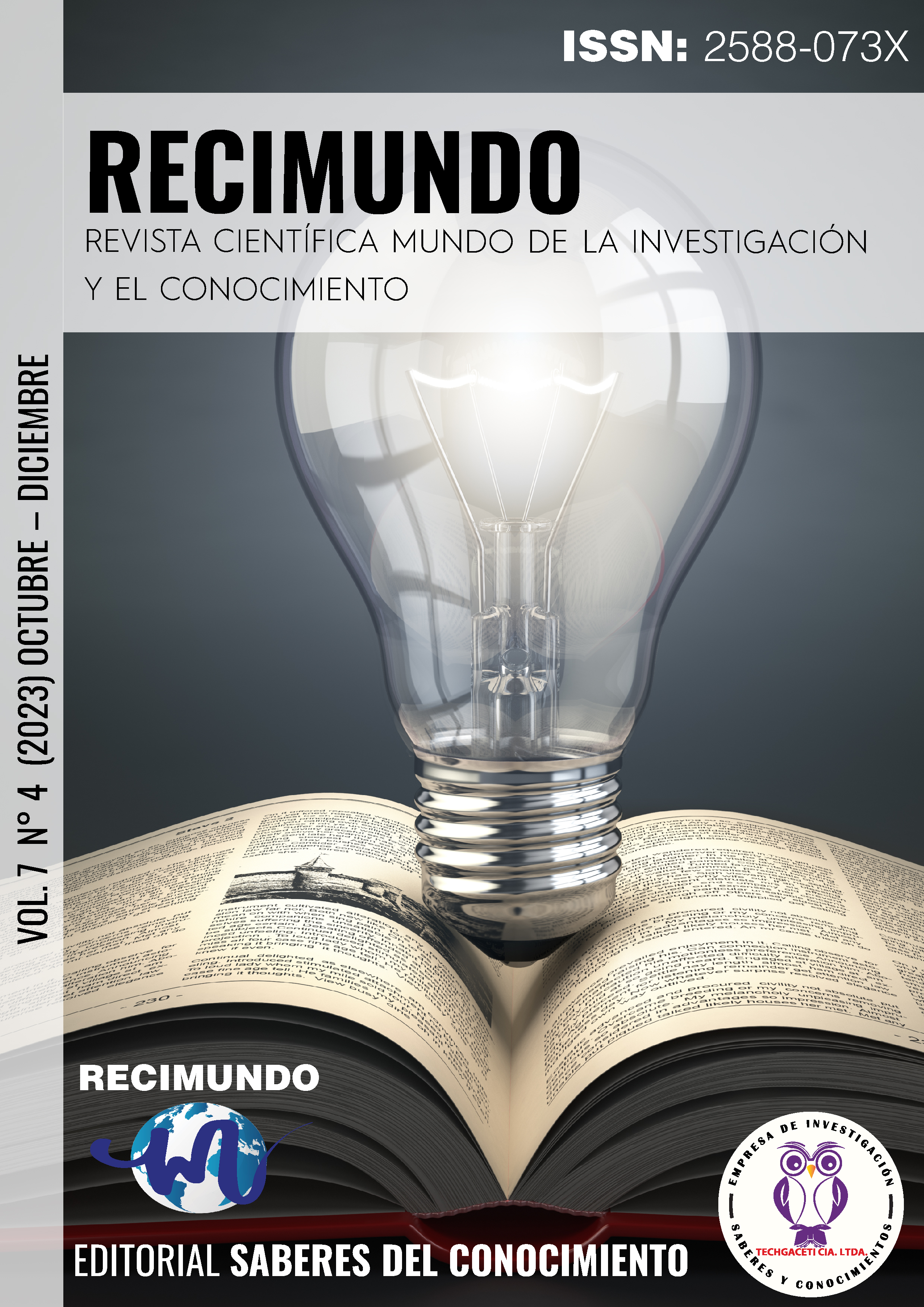Efectividad de la terapia manual con técnicas de liberación miofascial y movilización articular en el dolor crónico de cuello de origen mecánico
DOI:
https://doi.org/10.26820/recimundo/7.(4).oct.2023.272-286Palabras clave:
Dolor de cuello, Efectividad, Liberación miofascial, Técnica de inhibición suboccipital, Técnica de movilidad articularResumen
El dolor de cuello es una afección asociada a un déficit de alteración de la propiocepción de los músculos, entre los tratamientos para esta dolencia se encuentran la terapia manual a través de la liberación miofascial de inhibición suboccipital y movilización articular, sin embargo, la mayoría de los estudios emplean una combinación de técnicas, dificultando el identificar independientemente la que produce mayores beneficios. Objetivo: Determinar la efectividad de la terapia manual mediante la aplicación de las técnicas de liberación miofascial y movilidad articular para el tratamiento del dolor de cuello crónico de origen mecánico. Método: Se efectuó una revisión sistemática de los artículos publicados que evaluaron la efectividad de las técnicas manuales, midieron el dolor y puntuación de discapacidad en los buscadores Pubmed y Cochrane, incluyendo ensayos clínicos aleatorizados desde 2017 hasta enero de 2022, utilizando los criterios PICO: adultos con dolor de cuello mecánico crónico, terapia manual (liberación miofascial y movilización articular) y efectividad, para la selección de los artículos y la evaluación de la calidad se efectuó mediante la escala PeDro. Resultados: Se identificaron 339 registros de la base de datos, de los cuales 7 cumplieron con los criterios de selección, evaluaron a 466 pacientes con dolor de cuello crónico por causas mecánicas, con un rango de edad de 18 a 65 años, donde la terapia de movilización disminuye el dolor de cuello y mejora la discapacidad cervical. La terapia manual de inhibición suboccipital reduce la percepción del dolor y mejora el movimiento cervical en flexión- extensión. Conclusiones: Se identificó que ambas técnicas pueden ser aplicadas para reducir el dolor de cuello, con un mayor impacto en la percepción del dolor con el tratamiento de movilización articular a corto plazo, en el caso de las mejoras en el rango de movimiento cervical la más recomendada es la inhibición suboccipital.Descargas
Los datos de descargas todavía no están disponibles.
Publicado
2023-10-28
Cómo citar
Cedeño Giler, S. X., Maruri Montalván, M. S., Moposita Alvarado, E. M., & Andrade Hidalgo, B. R. (2023). Efectividad de la terapia manual con técnicas de liberación miofascial y movilización articular en el dolor crónico de cuello de origen mecánico. RECIMUNDO, 7(4), 272–286. https://doi.org/10.26820/recimundo/7.(4).oct.2023.272-286
Número
Sección
Artículos de Investigación



